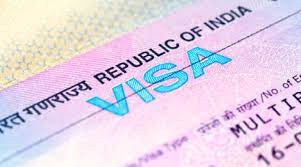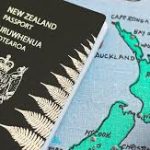Are you planning a trip to India and wondering how to navigate the complicated visa application process? Look no further! Our Ultimate Guide to Applying for an Indian Visa has got you covered. From understanding the different types of visas available, to filling out the application form correctly, we’ll walk you through every step of the way. With our expert tips and tricks, getting your Indian visa will be a breeze. So sit back, relax, and get ready for your adventure in this beautiful country! INDIAN VISA APPLICATION
What is an Indian Visa?
An Indian visa is a document that allows foreign nationals to enter, stay and exit India. The visa is issued by the Government of India and is required for all foreigners, except citizens of Nepal and Bhutan.
There are different types of visas available, depending on the purpose of your visit. Tourist visas are valid for up to 6 months, while business visas can be valid for up to 1 year. Student visas are also available for those studying in India.
To apply for an Indian visa, you will need to submit a completed application form, along with supporting documents such as your passport, photographs and proof of onward travel. You can apply for a visa online or at your nearest Indian consulate or embassy.
If you are planning to visit India, it is important to obtain an Indian visa before you travel. This document will allow you to enter and exit the country, and is required for all foreigners except citizens of Nepal and Bhutan. There are different types of visas available depending on the purpose of your trip, so be sure to apply for the right one. The process is relatively simple – just fill out an application form and submit it along with some supporting documents like your passport and photos. You can usually apply online or in person at an Indian consulate or embassy. Once you have your visa, you’re all set to explore this amazing country!
Types of Indian Visas
There are several types of Indian visas, each with their own requirements. The most common type of visa is the tourist visa, which allows individuals to visit India for up to six months. Other types of visas include business visas, student visas, and work visas.
The requirements for each type of visa vary, but all require a valid passport and proof of onward travel. Most visas also require a completed visa application form and supporting documents such as a letter of invitation from an Indian company or organization. INDIAN VISA ON ARRIVAL
Business visas are typically valid for multiple entries and allow stays of up to six months per visit. Student visas are usually valid for the duration of your studies in India, up to five years. Work visas are typically valid for one year but can be renewed for up to three years.
Once you have determined which type of visa is right for you, gather all required documents and submit your application at least four weeks in advance of your planned travel date.
Requirements for Obtaining an Indian Visa
In order to obtain an Indian visa, applicants must submit a completed visa application form, along with a passport-sized photograph and the applicable visa fee. Applicants for business visas must also submit a letter from their employer detailing the nature of their business in India. Additional requirements may apply depending on the applicant’s nationality and purpose of travel.
As of September 2019, citizens of most countries can apply for an Indian e-Visa, which is valid for 60 days, multiple entries. The e-Visa can be obtained online through the Indian government’s website.
Citizens of Afghanistan, Iran, Iraq, Nigeria, Pakistan, Somalia and Syria are not eligible for an e-Visa and must apply for a traditional visa through their nearest Indian embassy or consulate.
The following documents are required for all visa applications:
• A completed visa application form. The form must be signed by the applicant.
• A passport-sized photograph (2”x2”) taken within the last six months. The photo should be glued or stapled to the designated space on the application form.
• The applicable visa fee. Fees are subject to change without notice and are non-refundable.
Additional requirements for business visas:
• A letter from the applicant’s employer detailing the nature of their business in India. The letter should state the dates of travel, as well
How to Apply for an Indian Visa Online
If you’re looking to apply for an Indian visa, you’ll be pleased to know that the process is now entirely online. Gone are the days of having to physically go to a consulate or embassy to submit your application and wait in line for hours. Applying for an Indian visa online is quick, easy, and convenient, and in this guide, we’ll show you exactly how to do it.
To apply for an Indian visa online, simply head over to the official website of the Ministry of Home Affairs. On the homepage, you will see a link that says “Online Visa Application.” Click on this link and you will be taken to the online visa application form.
The first thing you will need to do is select which type of visa you need. There are several different types of visas available, so make sure you select the one that applies to your specific situation. Once you have selected the correct visa type, you will need to fill out some basic information about yourself. This includes your name, date of birth, nationality, passport number, and contact information.
After you have filled out all of the required information, you will then need to upload some documents. The specific documents required vary depending on which type of visa you are applying for, but they typically include things like your passport photo and proof of travel insurance. Once all of your documents have been uploaded successfully, you will then need to pay the visa fee. Visa fees can be paid using a credit or
What to Expect When Applying for an Indian Visa
When applying for an Indian visa, there are a few things that you can expect. The first is that you will need to fill out an application form. This form can be found online or at your local Indian consulate. The second thing you can expect is to pay a visa fee. This fee is typically around $60 USD, but it may vary depending on your country of residence. The third thing you will need to do is submit any required documents. These documents may include your passport, birth certificate, and proof of travel insurance. Once you have submitted your application, you can expect to receive your visa within a few weeks time.
How to Get an Indian Visa on Arrival
If you’re a foreign national planning to travel to India, you will need to obtain a visa before doing so. There are several ways to go about this, but the most straightforward method is to apply for an Indian visa on arrival. This can be done either online or at the airport itself, and it’s a relatively quick and easy process.
Here’s what you need to know about getting an Indian visa on arrival:
1. Who is eligible?
The vast majority of foreign nationals are eligible for an Indian visa on arrival, with the exception of those from Afghanistan, Iran, Iraq, Nigeria, Pakistan, Somalia, Sudan, and Syria. If you’re not sure whether or not you qualify, it’s best to check with the Indian embassy or consulate in your home country before making any travel plans.
2. What documents do I need?
When applying for an Indian visa on arrival, you will need to have a valid passport (with at least six months of remaining validity) as well as an onward or return ticket. You will also need to provide proof of sufficient funds to cover your stay in India. Additionally, you will need to fill out a short application form and submit two recent passport-sized photographs.
3. How much does it cost?
The price of an Indian visa on arrival varies depending on your nationality, but is typically around $60 USD. You will also need to pay a convenience fee when applying online (
Alternatives to the Traditional Indian Visas
If you’re not a traditional Indian visa holder, there are a few other options for obtaining a visa to India. These include the following:
– Tourist Visa on Arrival (TVoA): This visa is available to citizens of select countries, including the United States, United Kingdom, Canada, Japan, and Singapore. It allows for a maximum stay of 60 days in India.
– e-Visa: The e-Visa is available to citizens of over 150 countries and allows for stays of up to 60 days in India.
– Business Visa: The Business Visa is available to those who are traveling to India for business purposes. It allows for stays of up to 6 months in India.
– Student Visa: The Student Visa is available to those who are traveling to India for study purposes. It allows for stays of up to 5 years in India.
Conclusion
Applying for an Indian visa can be a complicated process, but the rewards far outweigh the effort put in. By following this ultimate guide to applying for an Indian visa, you should have no trouble getting your application approved and be on your way to exploring India with ease. Good luck!


